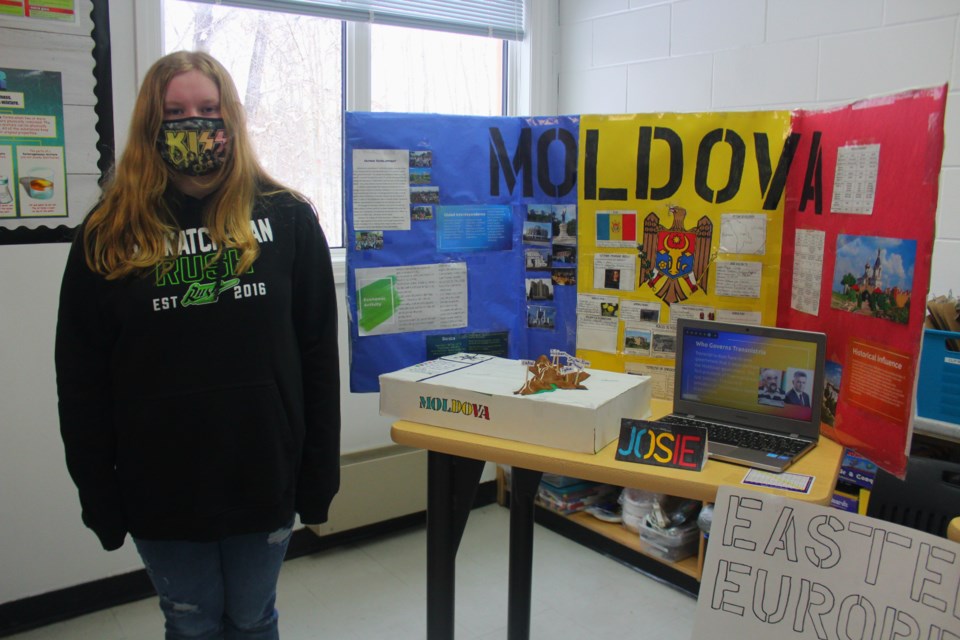Grade 7 students at Ecole McIsaac School had a chance last week to show what they’ve learned about the world with family and school officials.
It was class project unveiling day for the students last week, who presented projects about several European countries to their parents, friends and members of the Flin Flon School Board (FFSD) board of trustees May 3.
The projects shared common directions - a board with information and a colourful design, basic information about each country and maps of the country in question. From there, the students were encouraged to find ways to research and learn more.
Student Josie Wiens, for instance, picked the small nation of Moldova, nestled between Ukraine and Romania, for her project, saying that she was intrigued both by it being a small, out-of-the-way country but also by its role in the current war in Ukraine.
“It’s a country you don’t necessarily hear about and most people don’t know where it is,” said Wiens, standing in front of a bristol board presentation for the country, complete with a 3D relief map of the country made out of different colours of plasticine - something each of the presentations had.
“It’s more so in the news because of its Russian-influenced separatist region, Transnistria.”
Other students picked their spots for different reasons. Garron Fisher, for instance, selected Greece because of his interest in Greek mythology.
“Pretty much all of Greece is used for Mediterranean farming,” Fisher said.
“I knew a bit about it before, but I wanted to know more.”
Teacher Rogerio Areias said the project was part of the last cluster of lessons in the Grade 7 social studies class he has been teaching, covering human development, specifically in European countries. Instead of potentially boring or hard-to-grasp book learning, Areias decided that the kids should take a hands-on approach to learning the subject matter.
“I decided to do more project-based, rather than a standard textbook or tests. I feel like it was more interactive this way, especially with the mapping project piece of it, with creating a topographic map rather than colouring in and labelling one,” said Areias.
“When doing a research-based project, I feel like the students get more out of it and they also learn what they want to learn, while still covering the outcomes.”
The teacher said that each student picked out their own country to present a project on and went into great detail with their work, telling deep details about their chosen land.
“We had the flags of all the European countries all around the room. They picked one and we started with a basic fact sheet, where they covered the basics - currency, population, languages, things like that. Then they went slowly more in depth where they looked at human development, the GDP of each country, years in education, human rights, things like that,” said Areias.
“You can see that from any type of unit that you do, once it's hands-on, the students are way more engaged.”




